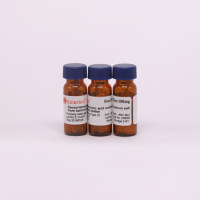Epigenetic modifications on the DNA sequence (DNA methylation) or on chromatin-associated proteins (i.e., histones) comprise the “cellular epigenome”; together these modifications play an important role in the regulation of gene expression. Unlike the genome, the epigenome is highly variable between cells and is dynamic and plastic in response to cellular stress and environmental cues. The role of the epigenome, specifically, the methylome has been increasingly highlighted and has been implicated in many cellular and developmental processes such as embryonic reprogramming, cellular differentiation, imprinting, X chromosome inactivation, genomic stability, and complex diseases such as cancer. Over the past decade several methods have been developed and applied to characterize DNA methylation at gene-specific loci (using either traditional bisulfite sequencing or pyrosequencing) or its genome-wide distribution (microarray analysis following methylated DNA immunoprecipitation (MeDIP-chip), analysis by sequencing (MeDIP-seq), reduced representation bisulfite sequencing (RRBS), or shotgun bisulfite sequencing). This chapter reviews traditional bisulfite sequencing and shotgun bisulfite sequencing approaches, with a greater emphasis on shotgun bisulfite sequencing methods and data analysis.






